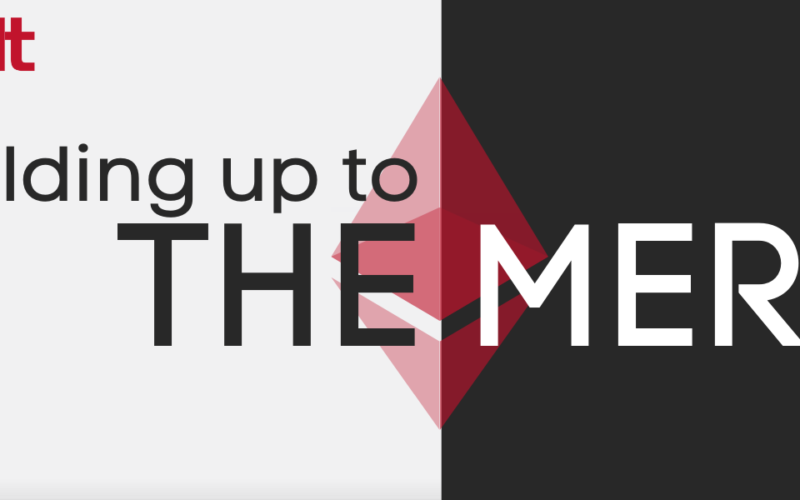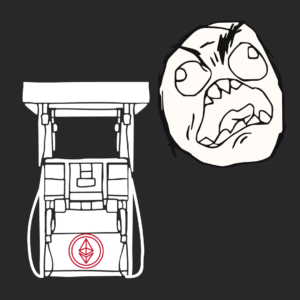If it looks like a duck | an overview of the current state of affairs
Recession or no recession? It’s always a hit and miss, listening to the experts and their forecasts on what’s going on with the markets, and their take on how things should be run by the central banks and governments.
It’s also notable that people who sat on the chairman seat of a central bank, are people that once criticized their predecessors for doing what they thought correct.
Today they face the same criticism and “expert opinion” by everyone, maybe rightly so, maybe because of the pain felt while all markets tumble and fall.
- If I bought 10 Apple stocks in August at a price of $174 (total of $1,740), at today’s price I would be losing $351
- A fund that bought 4 million Apple stocks, would have paid $696 million, and would be losing $140 million
- When tech stocks, chip stocks, media stocks, energy stocks, sector ETFs, sovereign bonds, all part of a portfolio are losing hundreds of millions of dollars each, it piles up and numbers can get scary. That’s when the blaming starts and questions like “data driven Fed, are you listening?” begins.
The IMF’s global economic outlook just came out, in part with reassuring elements of reading properly what central banks around the world are doing, but also with looming forecasted numbers of what to expect in the coming months and years.
According to their numbers, about a third of the world’s economies are facing 2 consecutive quarters of negative growth. That is the definition of recession. They also repeat that unlike your normal inflationary pressures of an overheating economy, external factors are the main drivers of the double-digit inflation we are experiencing in different parts of the world. A pandemic and its disruptions to the global supply chains, a senseless war and its disruptions to energy and food, geopolitical alliances and tensions, trade wars and embargos.
External, because under normal circumstances, inflationary pressures are caused by high demand and a low unemployment rate. Credit is more easily accessible through low interest rates, debt is increasing within its own expansionary/contractionary cycles, until the next central bank intervention, that will cool down the situation.
And although unemployment rates are indeed low and the spending power of people is strong thus requiring the said intervention, at the same time these external factors beg the question – can the central banks tame this newfound beast using the good old traditional ways?
To a certain extent the force is strong with the central banks but the fear and uncertainty of governments around the world, causes them to panic and overextend the tools they have in their disposal to fight. A central bank deals with monetary policies (money supply) while the government deals with fiscal policies (taxes and government spending). When the two try to steer a difficult situation at the same time, it’s like two people trying to drive a car with two steering wheels. It’s just not going to work.
A panic mode recently seen in the UK, which nearly caused a doom loop – when the price of sovereign bonds falls below a critical level and could destroy one of the biggest and oldest financial centres of the world. To fight the rising cost of living and the double-digit inflation, two policies came out. The first on September 8, was to cap the energy bill for a household at 2,500 pounds and would reportedly cost the government 70-100 billion pounds in the first year alone. It would be funded via bond issuance. The second on September 23, was to cut taxes of individuals and companies, also to be funded via government borrowing. Its cost was calculated at 45 billion pounds by 2027.
The tax cut announcement came a day after the 50 basis point rate hike. International markets panicked, investors lost faith in the GBP, and started a massive sell-off of assets denominated in the British Pound, while at the same time exchanging the currency for safer ones (like a strong dollar). On September 26, the British Pound hit a low of 1.03 against the dollar. When pension funds – that hold half of people’s savings – were getting margin calls and asked by the Investment Banks for more collateral on their leveraged positions, they also began a massive sale on their gilts (UK government bonds) to meet their obligations. With a rising supply and little demand, the market was already in a trajectory to disaster.
The Central Bank of England stepped in and promised to buy 65 billion worth of the supplied bonds to stabilize the market, until October 14th. Although it did prevent a doom cycle, money flew fast out of the FTSE as well. The government revised and stopped the tax cut plan but it goes to show that testing the markets has its limits.
Economists are debating whether what we’re dealing with, is an 80s Volcker situation all over again. Maybe it is, maybe not, but Paul Volker – the Fed chair at the time – was dealing with an inflation built-up over a period of +15 years following the Vietnam war, recessions, the Bretton Woods collapse, stagflation, a debt close to a trillion dollars (today’s debt is over $30 trillion) and much more. To put things in perspective, debt to GDP ratio was a little over 30% in the 80s, in contrast with over 120% today. In March 1980, inflation rate in the US was at 14.8% and interest rates were already high, in failing efforts to cool it down. Volcker raised the rates to 20% and engineered 2 recessions. It wasn’t until 1983 that inflation went down to 3%, that a period of growth had began for the US economy. Volcker was also booed and hissed for his brute-force – 20% interest rate is bound to cause a lot of pain – but today is regarded as a hero for many well-known investment advisors with billions in AuM.
Today, the Fed is dealing with hiking rates (already 5 times) from near zero, on a consecutive aggressive approach. Its dealing not only with a peaked, overheated economy but also with these external factors, all of which have an unpredicted future. Who knows when the war will end, what the world’s energy map will look like, what geopolitical effects on trade/tensions will be left behind?
Already tensions between countries are causing a turmoil to entire sectors. The second semiconductor US ban on China combined with hindered demand, has all stocks in the sector testing their lows. Most chip companies (and their clients like Apple and Microsoft) are listed on the S&P 500 and/or Nasdaq, bringing the indices down with them on a daily basis.
Similarly to Europe’s attempts to gain independence for its energy needs, China being dependent on global supply chains across the board will only push the rising giant to look how to internally complete the puzzles. China does have problems with a falling Yuan, the real estate sector (which takes up 20-25% of its GDP), the zero COVID policy restrictions that exert pressure on supply chains, and an aging demographic. Irrespective of the setbacks, with the Chinese government fighting corruption and its capital market reform, it’s still a superpower on the rise.
Deglobalization is now more alive than ever, since net exporters of valued products will first look inwards to support their own citizens, and then sell what’s available to the highest bidder. Opec + already proved that the cartel’s interests align with their profit, not with the households that will be affected by a 2-million-barrel supply cut. They already tasted the sweet $120+ per barrel earlier this year, why would they continue with an $80 price. And on that note, the United States SPR – Strategic Petroleum Reserve – is depleting while the eighth EU sanctions package is targeting even more Russian petroleum companies (as well as Russia’s manufacturing, aerospace, electronics, chemicals, crypto-asset wallets etc).
Closer to home, the EU is still trying to tackle with the Energy problems with Germany and the Netherlands pushing for joint gas purchases so that member states don’t outbid each other. The region is also evaluating caps on energy bills but with rational concerns raised by its members. Placing a cap on import increases fears of other regions around the world willing to pay more and outbidding the EU states. And what about increased demand? If the government is subsidizing a cap on my energy bill, I wouldn’t think twice to use more and it’s something that many would take advantage of.
Back to the IMF report, it considers that the war in Ukraine, the global higher cost of living from energy/food disruptions, and the slowdown in China are the main forces that currently push the markets in a volatile and fearful mode. We can measure how volatile and uncertain the market is through the “fear index”, CBOE’s VIX index currently above 30, indicating a level of extreme uncertainty. A level below 20 is what we would consider normal behavior. The three largest economies i.e. the United States, the EU and China are quote “going into a stall”.
The forecast looks into a stubborn global inflation peaking in late 2022 at 8.8% and dropping to 4.1% by 2024. That’s 2% above a country’s average target, but its also not a double digit, money hungry inflation rate. Hard to tell, but there’s some wishful thinking placed on the numbers, relative to how the external factors will settle around the globe and their aftermath.
The US dollar is keeping strong, affecting Emerging and Developing countries that hold debt in USD and find it difficult to pay their loans. Commodities are down, stock and bond markets are down around the world, secular (non-cyclical) sectors and cash are given more weight than they might deserve.
In all of this mayhem, investors are trying to guess the terminal rate, how long it will stay there and when the Fed will pivot. A crucial stage when fighting inflation because the terminal rate is when the Fed says enough, and its ready to test the theory by stopping the hikes and keeping interest rates at a level. When ready, it will loosen its tightening policy and start dropping the rates to boost growth and help stimulate the economy. If the rates drop too soon, it will push inflation back up and it might take a while before it corrects itself. If too late, the tight economy in a recessionary mode will take longer to recover.
The bond yield curve is already inverted. This means that the short term bonds are paying more than the long term bonds. Why? Under normal circumstances, bond holders get paid more interest if they buy long term maturity bonds due to the unpredictability of the long period. Short term pay less because they expire earlier. When there’s uncertainty in the markets, long term bond holders shift to short term bonds, causing the yield curve to flatten and then invert. If you can’t picture the chart, then think of the spread, the difference between the two yields. The closer the spread gets to 0, the flatter the curve. The second it goes below 0, you have an inverted curve.
Why is this important? Because inverted yield curves predicted every single recession over the years. If the inverted yield persists for a longer period, this would be yet another indicator that the economy is in a recession. Central banks take different maturities into consideration when looking at the yield curve, like the 2 year vs 10 year, or 2 year vs 30 year or an even shorter term like the 3 month T-bill.
Source: US Treasury
If it walks like a duck, sounds like a duck and looks like a duck, shouldn’t we call it a duck? The acknowledgement of a “very slight recession” in 2023 is either an understatement of what’s happening, or an overestimate of the ability of a person to actually recognize… a duck.
The information provided is strictly for informational use and is not meant in any way to be construed as investment advice. One should seek expert advice, as all as investment strategies involve risk of loss.











 The global growth trend is on a downward spiral and although we would love to see the growth rate of emerging and developing countries growing faster than the advanced/developed countries, it’s not. No one likes the classifications developing / emerging / developed but this is the plate we’ve been served. If everyone says it’s a hot-dog, we can’t go around saying we’re serving lobster.
The global growth trend is on a downward spiral and although we would love to see the growth rate of emerging and developing countries growing faster than the advanced/developed countries, it’s not. No one likes the classifications developing / emerging / developed but this is the plate we’ve been served. If everyone says it’s a hot-dog, we can’t go around saying we’re serving lobster.


